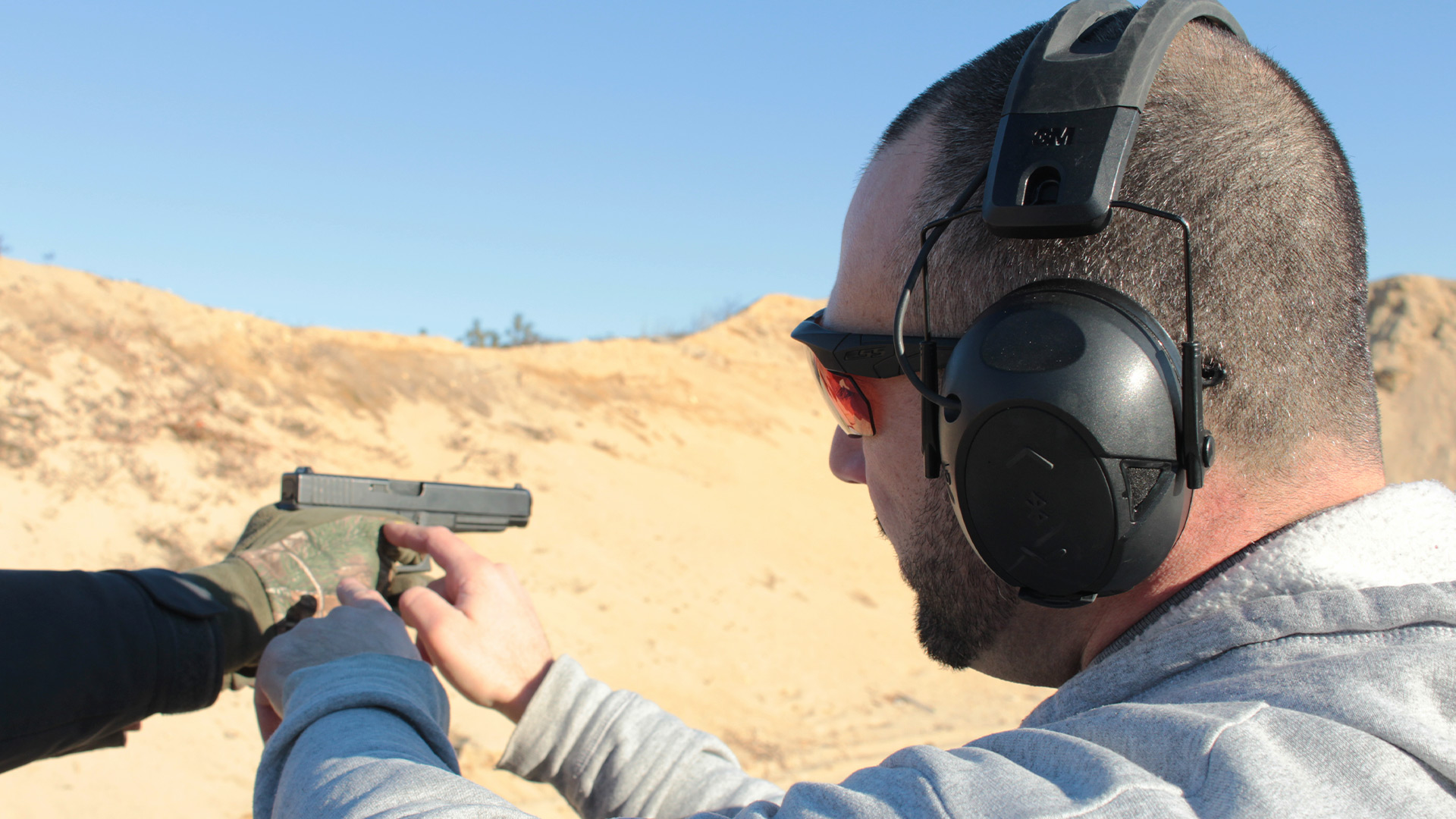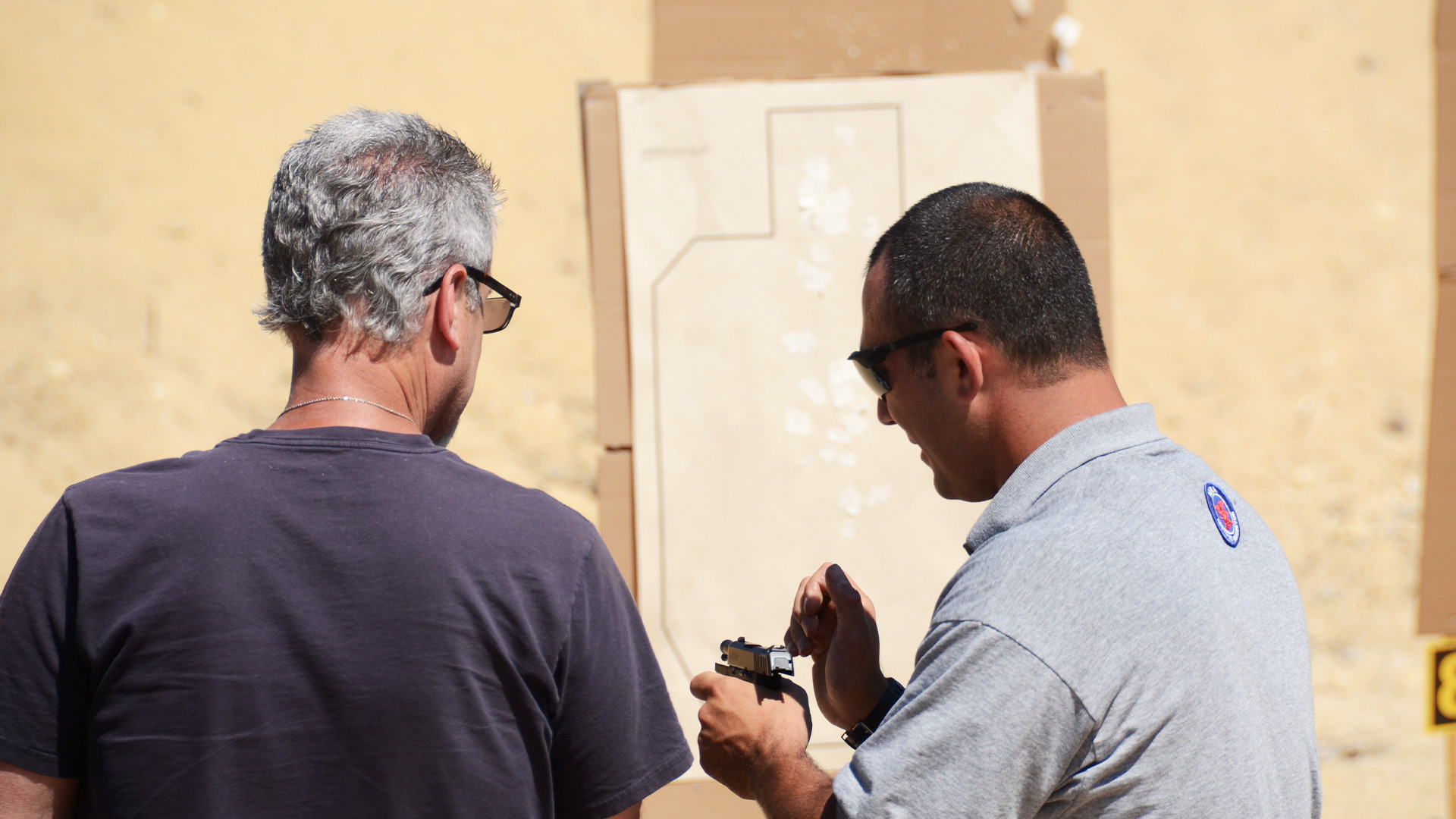
In 2013, many new shooters found their way to Renaissance Firearms Instruction for training. It was during this time that I fell in love with teaching first-time shooters. While many instructors seek the prestige of coaching a champion athlete, or coming up with cool acronyms for basic methodology, nothing makes me happier than helping someone new achieve a “light bulb” moment. Sometimes it’s as simple as understanding follow through, or even basic sight alignment, but if it helps to break down a barrier that day—we are both a success.
Over the years, I’ve given the same three pieces of advice to anybody that I’m working with—regardless of shooting discipline. Wherever you are on your journey, keep these three bits of advice fresh in your head.

Be Patient
You know that scene in every action movie where the hero saves the hostage, gives them a gun and they are instantly as proficient and accurate as the highly trained operative that saved them? Well, that only happens in the movies. The truth is that shooting is tough. So tough that several forms of it are used to decide who gets to take home Olympic medals. To get to that skill level, these shooters have taken their licks and put in thousands of hours on the range. Pop culture demonstrates that firing a gun accurately is a simple process that involves nearly no skill. It is of great importance to dispel that myth as early as possible in a new shooter’s career. Providing this advice at the right time is critical and requires a good read of the shooter’s mood and the overall scenario. Saying it before they start shooting can take the pressure off of them and saying it when they are doing poorly might just relax them, as it puts their progress into a realistic timeframe. Of course in both scenarios, this advice can have the opposite effect, so you need to have a good read on your student before you open your mouth.
One Discipline at a Time
They sell 64-gun safes for a reason, but you don’t have to try to fill it in a weekend. When someone starts buying guns, it’s not uncommon to watch them buy a second, third or even fourth in rapid succession. Even I was guilty of this in the beginning, as whenever I picked up a new gun, I’d also grab another, inexpensive gun “on the side.” I called it the $200 rule, where any gun that I found under $200 came home without any further consideration. Naturally, when you buy a new gun, you want to shoot it right away, and if you keep buying guns you never really have an opportunity to develop much skill with any given one. Thus, I urge all new shooters to figure out what they prefer (maybe buy one for each platform), and then dedicate an entire year to doing that one thing better. Trying to master Steel Challenge, while learning how to break 25 birds in a row, after you spent an hour trying to learn how to read the wind is not going to do you much good. As the old saying goes, “Beware the man who only has one gun. He probably knows how to use it.”
Don't Be Afraid To Miss
When I coach students, more often than not the largest limiting factor is themselves. Certain areas of shooting need to be discovered almost by accident. When I was first learning to double-tap a target, I just would not buy that if I executed the first shot well, then the sights will return to the original point of aim. To accept this, I needed to rip two shots out as fast as I could press the trigger and low, and behold my first attempt landed me a double-alpha. When training students to run plate racks or minimize their times in Steel Challenge, I recount this story and remind them that they will never know how good they are until they push themselves past their breaking point. And that after this, it is imperative they continually test the waters to see if that point has been pushed further back. Rifle shooters also benefit from this advice, especially if we are talking about shooting in the wind. Sure, that wind is going to move your bullet, but this is the time to learn what your gun does and how much that wind really matters. If you miss, you still have DOPE to log, and that is just as good as a solid hit during a practice session.
Shooting is an amazing sport, and nothing is better than accomplishing something that you never thought was possible. The absolute joy of instruction comes from reliving these moments over and over again with my students. Through routine training and solo practice, I’ve watched many students improve beyond their initial goals. They are usually the ones that have tremendous patience, along with the self-discipline to focus their attention like a laser beam. In addition, they also have humility that I can only dream of—and that in itself might just be the secret to great shooting.
Read more: WATCH: Pistol Drills To Aid In Training



































